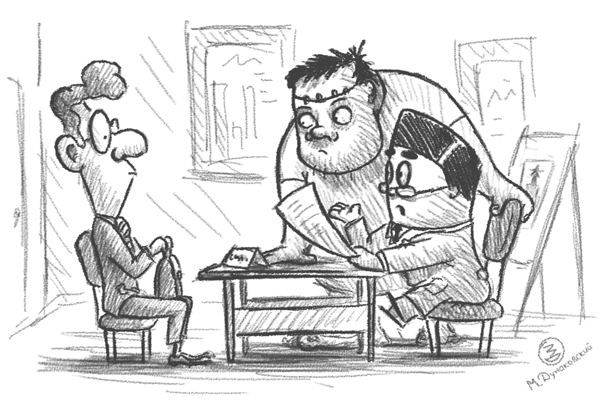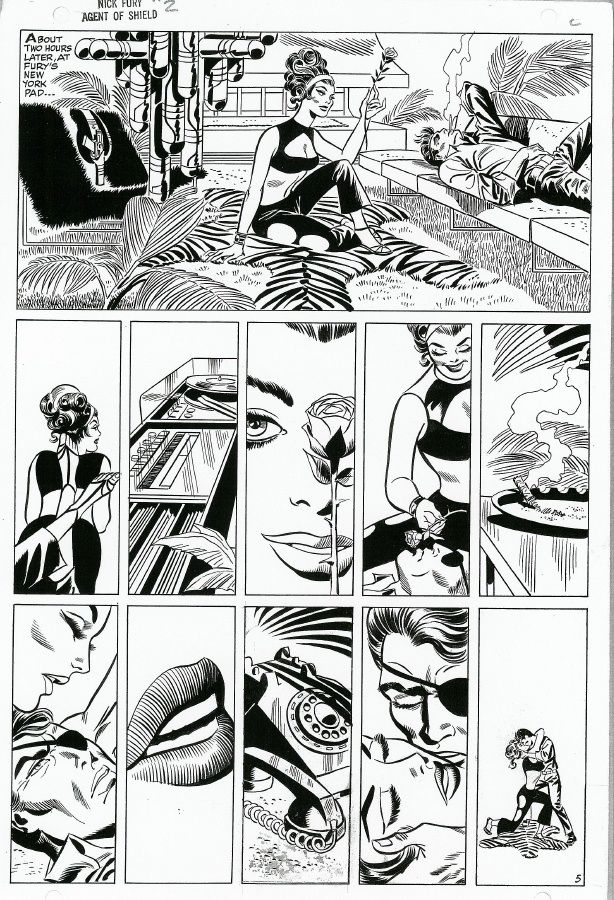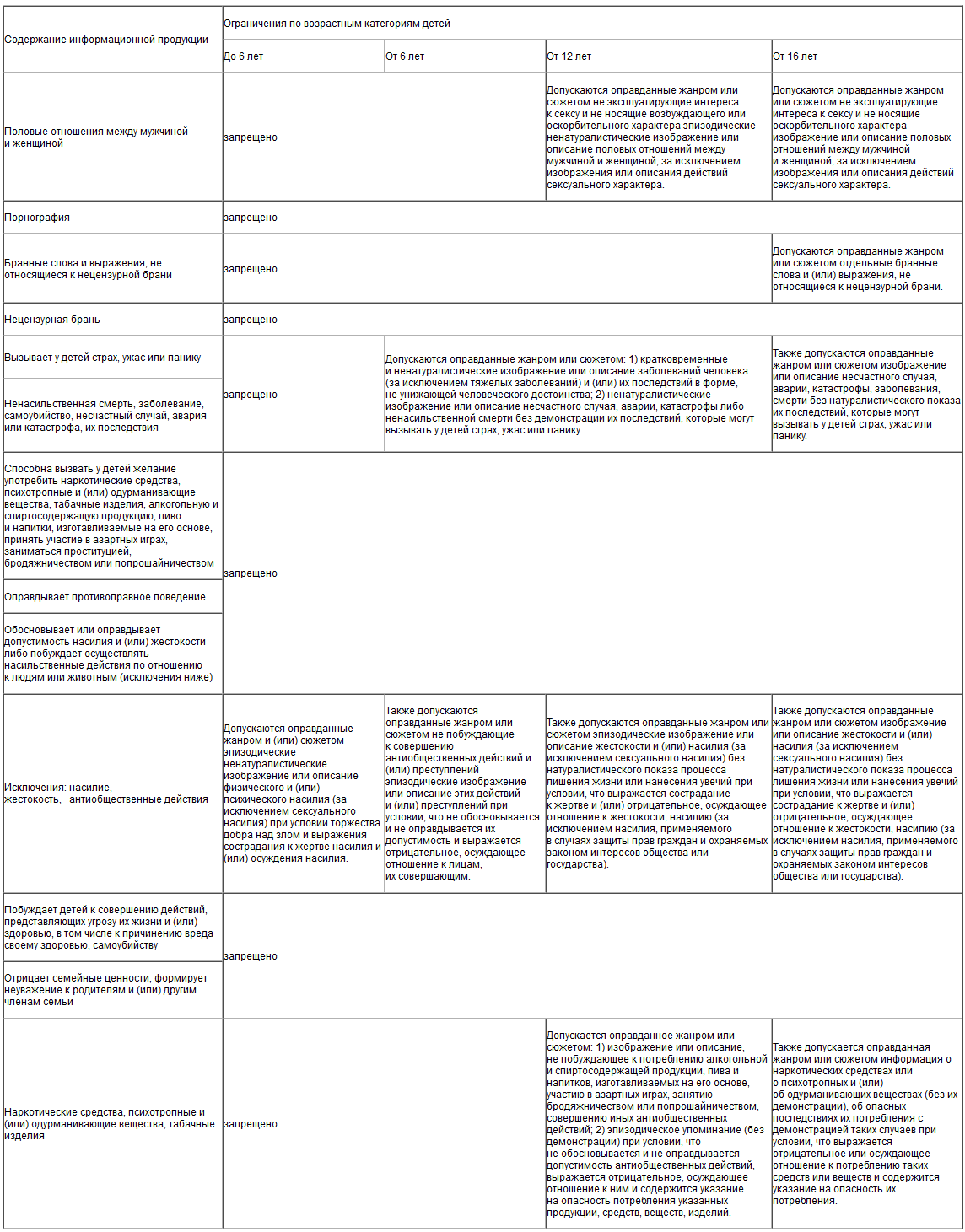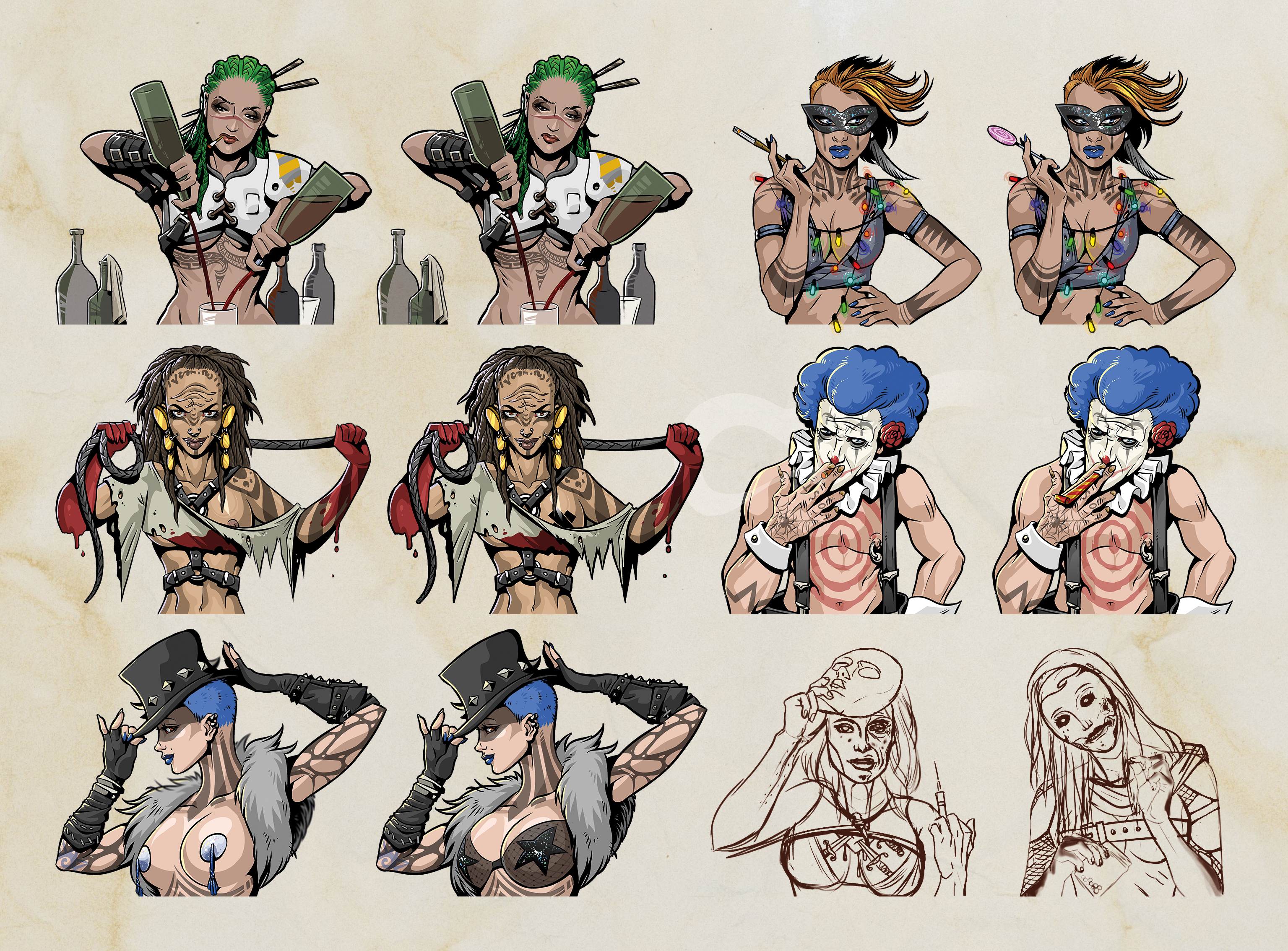How the protection of children from information is arranged - and the enchanting story about where it first came from (18+)

It all started with American comics after World War II. The fact is that before the war, a ban on the sale of pornography was introduced, and former bootleggers often engaged in pornography. And now they got printing presses, and they had to urgently invent something. Comics were invented, because with the tense atmosphere because of the war, the need for simple things began to grow (and the comics then made it so that it was far from necessary to be able to read) and simple superheroes who gave comfort.
Superman and his lads appeared. A little later, with the advent of Wonder Woman, all of this evolved back to soft pornography (value judgment). Looking ahead - the doctor of psychiatric sciences accused this series of developing many sexual perversions in young Americans. Why? Yes, because for the audience the most natural story with a lady in shorts on top of the rest of not very rich clothes is to be in trouble. Sexually. Well, as far as possible then.
Important: in the post there are a lot of simplifications and generalizations, which causes a number of inaccuracies (compression losses, especially noticeable for those who are directly specific to the topic).
Now about the Wonder Woman:
Jill Lepore says: “In episode after episode Wonder Woman is chained, bound, gagged, lassoed, tied, fettered and manacled. She is locked in an electric cage. She is winched into a straitjacket, from head to toe ... “Her eyes and mouth are taped shut. She is locked in a bank vault. She's tied to railroad tracks. She's pinned to a wall. ”
Pictures are examples here and the quote itself is from here .
So, during the time of troubles, the children bought everything that they found. The plots were simple, the characters are somewhat grotesque by today's standards, the villains are clearly evil and indecent. Most often, the Nazis played the role of villains, and all of them defeated. Superman beat them with his bare hands, Mickey Mouse beat with his bare paws, in general, everything really came true. It came in. The children were happy.
According to a slightly more recent assessment, comic book penetration was approximately 95% for children and 70% for adults. There are questions to the methodology, but in general the order is realistic. Bestseller circulations - 500 thousand pieces.
The crisis of the genre came after the war, when the Nazis somehow ended. They needed an urgent replacement in the plot, and there were no evil Russian hackers yet. And then the publishers decided that superheroes would fight crime. It quickly turned out that crime as antiheroes was so-so. Crayons, funny and generally unworthy of this pathos. It’s like crushing cockroaches in a tank.
And then one of the former bootleggers and pornorders comes up with an awesome thought: what if we make a comic strip about crime? It is assumed that he has a rich knowledge of the issue, directly interior. A good experience, he can throw a lot of texture and striking examples. You just need to take a couple of stories, transfer to fictitious rails - and release. Are we trying?
Have tried. It’s gone. Fucking went. The rails were not so fictitious, but sufficient so as not to attract anyone according to the testimony.
This is how the mass comic book series appeared, where the main characters are villains at once. If you played the first Dungeon Keeper, then you know its slogan is “Evil is Good”. This gave rise to the first phenomenon of the romanticization of the underworld: as at first the boys wanted to become an astronaut, and then in the 90s the “new Russian”, so in the USA this process began.
And in order to attract the attention of customers, it was necessary to differ from competitors. Therefore, very quickly on a scale from "too cruel and bloody" we go to the values: "fantastically prohibitive level of blood", and this is more or less familiar.
The situation was complicated by the fact that since there was no control over the comics, the authors found experts and asked them to share their experience. The experts happily shared. And then the police began to notice that some particularly gifted individuals use comics as instructions. And it turns out, damn it!
That is, at first the youngsters simply admitted that they did not know how to torture the victim correctly, but they had a comic, and everything was painted there. Everyone does it. Then things started to go more seriously: if you give more modern examples, then reading “The killer’s diary” you can no, no, but make a couple of good ideas. For business. I’m still quoting a couple of lines from there about the accuracy of setting TK in the spirit: “Understand there, you know with whom.”
But the young underworld did not take managerial ideas, but directly the technological scheme of crimes. And I came across.
Then the youngsters were sent to doctors in psychiatry. A German-born psychiatrist, Dr. Wertham, saw only such people, and they all joyfully shared comic book details, compared themselves to heroes, and generally explained what cool role models they were. Since the doctor did not really see normal children, he had a hypothesis. It consisted in the fact that comics should be removed from sale and burned, and then never sold again. With her, he went to Congress, gaining a bunch of his research. And even having written the book “Seduction of the innocent." That is, it was not prepared instantly, thoroughly and rather loudly.
The problem was acute throughout the country, so they appointed a commission and public hearings (debates on television). They called parents, psychologists, police officers and publishers. Only
I’ll simplify it again now, but a dialogue like this took place:
- Do you somehow think that all this can get to the children?
- Well, yes, we make good comics and expect that parents know what children can and what cannot.
- And some kind of editorial work on this topic, such as control of excessive cruelty, is underway?
- Well yes. We don’t print any chernukha, we focus on good taste. We have a respected cool publisher.
- Ok, but what do you think about this? - the doctor asks and shows a picture on the air:

- Does it taste good?
And I must say that Willy just recently edited it. And he asked the artist to remove from the cover a realistic image of a neck cut, because something it looked a bit unpleasant. And the client likes it more when it’s scary, and not when the comic book cannot be read at meal time. Therefore, he answered with a broad smile:
“Sure, it tastes very good.” Yes, it’s quite normal, it’s a cool horror, man, why are you!
So he was remembered with that smile.
As a result of the hearings, they adopted something close to the Comics Code Authority of the 54th year. There are exact limitations here, but the main thing is:
- From the comics, everything that can harm the child from a moral point of view is withdrawn.
- You can’t show crime patterns.
- The scenes of graphic violence were removed because the comic book is a children's genre.
Consequence : now, when a tiger ate a man, he first showed up in a jump, then a black frame, then a contented tiger, slightly coated with ketchup. The adult received symbolic information, the child did not see the cat playing with the eye, everyone is happy.
The second consequence : the boom of all kinds of fantastic comics, because the crimes had to be committed interestingly, but with the use of technical means that do not exist. Because it’s difficult to copy a sound screwdriver and go into business with it.
Then a special commission was appointed (at first activists of the anti-comic movement, that is, something like the heads of parental committees), which did not give any more detailed rules, but was responsible for the label “children can”. The mark was placed on what was suitable for children. Comics were sold together with adults, but now parents could allocate money to the children with the intended purpose:
- Son, now, go buy yourself a nice, kind “Avengers”, and not “Hellish hardcore with criminals and robots.”
Each specific issue was discussed by experts and a decision was made that it was important that it was not. For example, here is Elizaveta Klyuchikova (our expert in treating children after shock exposure with information and parents) showed an excellent example of how the phone seemed too sexy to the committee. In the context, an employee comes home to Nick Fury:


But the coolest thing is that for several decades there were no laws on the separation of comics. Both those and other publications were sold from one shelf in one kiosk to anyone who would give money. Here is another picture in "7-11" in Japan. Children come up to the stand, flipping through an open hentai, discussing, leaving. But the cover should be decent.

Only later did the age rating system evolve to something much more thoughtful and predictable.
The main fixes are as follows:
- A distinction was added, what and to whom it is possible to sell, what and how to advertise.
- More or less clear rules appeared to immediately make a product for a certain age category. That is, instead of expert evaluation after release - a black list of information objects before.
- Responsibility and judicial practice appeared.
How does it look with us
I know for someone this can cause a strange reaction, but my value judgment is that our system is well thought out. In the sense that you more or less know exactly what to do and how. And the children are protected. There are shoals in the fuzziness of the wording, we’ll talk about them now, but the general algorithm is very clear. Not without excesses, but you can use it normally.
So the diagram:
- You take the law “On the protection of children from information harmful to their health and development”, the law “On basic guarantees of the rights of the child in the Russian Federation”, the decision of the Commission of the Customs Union of September 23, 2011 N 798 (as amended on September 26, 2017) “On adoption Technical Regulation of the Customs Union “On Toy Safety” (together with “TR TS 008/2011. Technical Regulation of the Customs Union. On Toy Safety”). You learn from them that children can cram very small details in their nose, you don’t need to make nested dolls from radioactive plastic, and arrange a fox propagating the idea of super-violence in a children's book.
- Take laws that are generally prohibited regardless of age. As a result, it is hardly possible to make explicitly pornographic figures (but in Japan, please), and to promote all sorts of things that are marked with an asterisk "an organization prohibited in Russia."
- From the law on protecting children from information, here is a table like this:

- Make the decision that you have a certain category. For example, 12+. Or 6+. Label this product.
Everything, you are magnificent, nothing more needs to be done. Even if you have a gingerbread man with a serious venereal disease there, loosening family values, you did everything right.
But there is still a feedback loop. As soon as someone from consumers does not like this kolobok, you will be charged. More precisely, first a complaint to the Rospotrebnadzor, they will check how you correspond to the category. And our augmented kolobok from the example clearly falls out for 6+. Further court, a fine to a legal entity from 20,000 to 50,000 rubles. + confiscation of the subject; IP - from 5,000 to 10,000 with confiscation or administrative suspension of activity for up to 90 days (Part 1 of Article 6.17 of the Code of Administrative Offenses). If desired, the results of the examination can be challenged, the court will appoint its own, and it will be final.
What to do to prevent this from happening? Either be sure that you will pass the examination well, or else points are added to the algorithm:
5. You bring the goods to an expert who is on the ILV expert list, and according to the profile - someone checks the sound, someone pictures (and knows how to distinguish a hundred-dollar bill with a man with a bare primary sex sign from pornography), someone according to the texts and etc. The list and all the necessary details are here .
6. An expert after examining the goods makes three copies of a piece of paper, one of which is sent to the ILV.
Now, if a complaint lays down on you, ILV looks: was there an examination? It was. Product in its category? In his. The complaint is denied. Even if there is suddenly a second examination, which will show the category worse, then if the conclusion is drawn up by experts from an accredited list, one can refer to the lack of fault of the manufacturer (as having committed all the necessary steps for classification, and, as a consequence, the composition of the administrative offense).
Here you can enjoy the examination documents. Here is a good example of what exactly is being watched.
This analysis of the Cord video struck me with the last phrase from the quote and the literal build-up of the numeral:

But from Munchkin:

This is the reason to upgrade because of the too cute under.
There is a lot of beauty there, but I want to show another sensational similar story - obtaining permission for a brand.
The manufacturer of the Belochka vodka line, the Rusinvest LLC company, challenged the ban of Rospatent on registering the image of the tousled squirrel depicted on the bottle labels of the vodka produced by it. Earlier, Rospatent passed a decision banning the patenting of the animated “infernal protein” ...
“... the examination of Rospatent did not take into account that the Belochka vodka trademark itself is known to a wide range of consumers and does not cause indignation. The vodka producers considered the arguments of the examination about the “bared face and bulging eyes” to be very subjective, since the concept of beauty is inconsistent. In favor of the fact that the type of squirrel is not antisocial and immoral, the company argued that the label has already been patented abroad, in particular in the USA, Lithuania, Armenia, Azerbaijan and Kazakhstan. ”
Here is the proof in Izvestia . The phrase “The concept of beauty is fickle" has become a legal meme. By the way, they disputed bulging eyes by the fact that this is an anatomical feature of a squirrel, fixed in the language in the phrase "beat a squirrel in the eye." I say, I love lawyers with a sense of humor.
Why is this example important? Because if the manufacturer pays for the examination, then the expert is free to interpret blurry things at his discretion. And you can get around a lot of things: for example, cruelty to people is replaced by cruelty to zombies, and they are almost people. Or here are faces covered with masks: who is it, people or aliens under them? Then the gradation is this: the blood turns green. Even younger? Monsters without faces and anthropomorphic figures. And so on. Do you want to swear literary? Fuck there, with the dictionary a lot of things you can think of. But I’ll say that the same ad in the newspaper “A dog, a white bitch, disappeared. Bitch! "I was wrapped up somehow, but by EULA with a newspaper.
Now most of the judicial practice is related to advertising (FAS fun nests those who do the wrong thing). By the way, a typical jamb is to put 8+, when in the law the nearest available 6+ and 12+. It turns out that there is simply no labeling.
We had a case when it was recommended in a 12+ situation for players from 8 years old not to mislead the consumer, but to immediately put on players from 12 years old. Because, on the one hand, the purpose of labeling is for parents to decide whether or not to do this, and on the other hand, not to confuse a person when choosing a product.
Therefore, we did three things a couple of years ago:
- Released the Jackal version without mentioning the rum (pirates have historically sanitized water for them).
- Changed the age on the base version.
- Introduced a rule under each label about the age limit to sign why.
Another of our stories - I had to redo “Zombies in the house” so that there were no parts of monsters and weapons on the box (therefore, there are dual-use garden tools).
But colleagues from independent publishers have another excellent example of gradation of the pictures of the Raiders game:

Image courtesy of Dmitry Rhunwolf Telari
Oh yes. I also wanted to share the fact that now the hype is connected with computer games, as it once was connected with comics. And I just quote a piece of ivansychev's post :
The authors of Grand Theft Childhood’s book are convinced: “By focusing on such a simple, but insignificant goal, such as violence in computer games, parents, social activists and politicians ignore the more important and already known causes of violence, including social, behavioral, economic, biological and mental factors” .
So, if "Children in the basement played in the Gestapo, the plumber Potapov was brutally tortured," then this is not only information objects from goods. These are the parents. And generally Wednesday. Well, at least in part. But it’s easier to transfer to computer games and comics entirely.
Therefore, in the next series we will talk about what ultimately becomes with those children who were informally influenced by their parents, close people, friends, teachers, and so on. And how to work with them. And now I just have to say thank you to the correctional child psychologist Elizaveta Klyuchikova and the lawyer of our group of companies Oksana Gruzdeva for invaluable help in answering my stupid questions.
All Articles